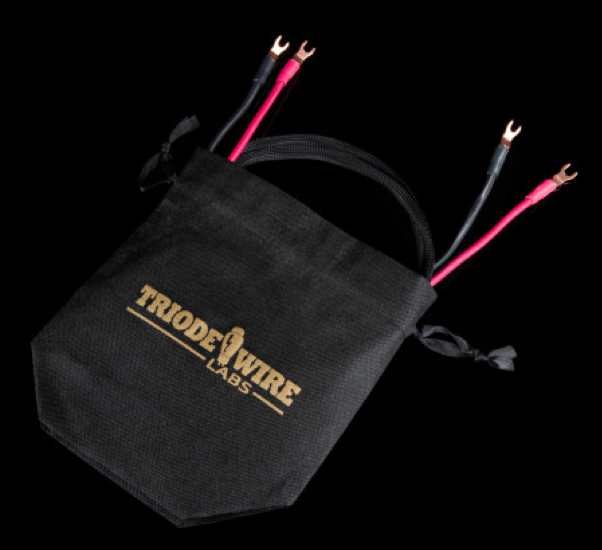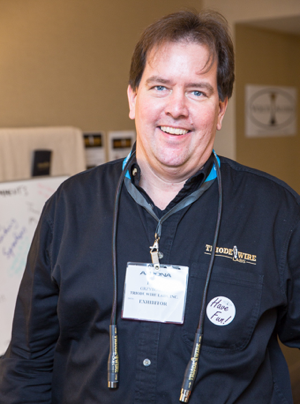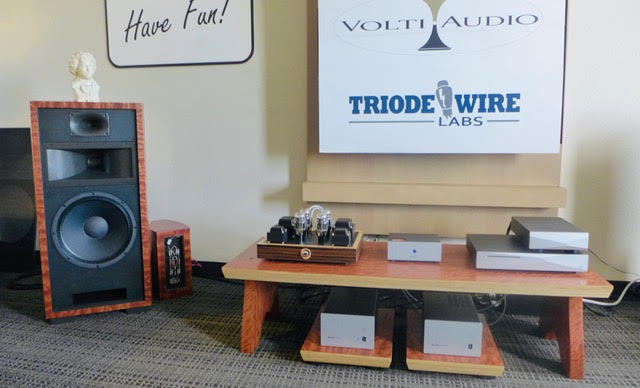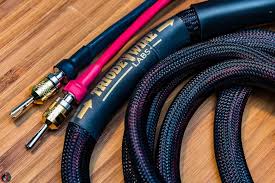
Triode Wire Labs, now there’s a brand that sets a pretty high bar for your expectations of a product line. Many people in audio associate Triode with a particular sound that elevates emotion and involvement in the audio experience above dissecting the sound under an audio microscope.
When he chose to name his company Triode Wire Labs, owner Pete Grzybowski, aka “Triode Pete”, fully embraced the challenge the name brought along with it. As Pete describes it, he is after “exceptional natural musical fidelity” in his designs.
One of the first things you see on his website is the statement, “Audiophile” and “Affordable” should not be an Oxymoron! All I can say is, “Amen to that Pete!!” Nothing gets me more revved up than getting a great product at a great price.
About Triode Pete

Pete is a licensed Professional Engineer with a B.S. from Clarkson University and an M.S. from the New York Institute of Technology. He spent 28 years in the power generation industry where he gained considerable knowledge and experience in electrical theory and construction.
Being an avid audiophile, he started playing around with DIY cables. He experimented with different metals as conductors, assorted construction techniques, various stranding sizes, different twist lengths, and insulation, as well as grounding and shielding techniques. He finally found a material and construction technique that worked to his satisfaction for audio applications and could be assembled for affordable audiophile prices.
Pete determined that the “best” assembly technique for AC power and AC transmission was to utilize Litzendraht Braiding. This technique was developed in the 1930s in Germany. This type of construction offers very wide bandwidth with excellent phase performance, especially for audio transmission. He has continued to fine-tune his thinking. It typically takes Pete two to three years to come up with a new recipe that he considers to be an improvement.
Triode Wire Labs at Florida Audio Expo 2020

This cable line piqued my interest at the Florida Audio Expo this year where Pete shared a room with Gary Dews of Border Patrol and with Greg Roberts of Volti Audio. Incidentally, The Audio Beatnik gave this room an award for the best system under $100K.
At an after-hours listening session, I heard a sound that totally seduced me. Now my natural inclination was to give credit to the excellent sounding Volti Speakers that Greg was showing and Gary’s Border Patrol electronics and Border Patrol DAC (review coming). After all, those components were sitting there right in front of me as I listened, and they were what I saw. Make no mistake, credit was indeed due to them.
When the session ended I got up and congratulated Greg and Gary on the excellent sound, and then I had one of those moments of clarity. There was something else lurking behind all this equipment, and it was stealthily performing its job with little glory. The captivating sound I heard that evening was also a result of the Triode Labs Wire that connected the entire system, speaker cables, power cords, interconnects, and digital cables. So I sought out Pete to give him the credit that was due. I mentioned that I would like to take a listen to his cable line when the time was right. Pete, who is always gracious and accommodating, gave me his card. He told me to drop him a line when I was ready to invest the time to evaluate his cables.

Fast forward a few months and a couple of conversations later, and a full loom of Triode Wires arrived.
The cables came in nice “earth-friendly” biodegradable drawstring pouches along with certificates with the serial numbers, production dates, technical descriptions, and some very useful instructions on getting the best performance from the cables. It was quite obvious that the individual components that were used to construct these cables were of high quality.
As I took them out to examine, I was delighted to find that all of the cables are quite flexible. That makes them easy to work with and allows for stress-free cable layout. Even the substantial Obsession Power cord easily yielded to the orientation I needed for correct routing. I know this is not a huge factor, but all things being equal, given the choice of a flexible cable or one that can literally tilt up your preamp when attached, I’ll take flexibility.
My Review Procedure
If you have followed my previous reviews you know I like to write down an initial impression in my listening notes when I first audition the product. For a cable review, my procedure consists of the following. When possible, I like to insert a full loom into the system and not just one cable at a time. I have concluded that this is the best way to get a grip on the “house sound” of the cable brand.
As my reviewing progresses, I will work specific groups of cables like power cords or interconnects in or out to determine their effect. Do not mistake my process as advocating for a full loom of cables from a single manufacturer in your system. Sometimes using cables from the same manufacturer works well in a system and sometimes it does not.
After inserting the cables in the system, I put a break-in CD on repeat at a medium volume overnight. When I return the next morning, I begin my initial evaluation. Evaluations then continue usually for the next 30-60 days to allow for break-in. I am fortunate. My listening room is fully isolated from my family and the house. I can run my system at any volume 24/7.
Manufacturer or Artisan
Before I wrap up Part 1 of this review, I want to address two terms, “shielding” and “grounding”. Pete gives a significant amount of attention to these terms in his designs. Shielding can be a bit tricky. Too much shielding can give you a “dead” sounding cable. With no shielding, you run the risk of your cable becoming an antenna and dumping RF into your system. Pete’s background in the power industry obviously serves him well in this area.
All of his cables exhibit “blackness” to the background while being very dynamically expressive. This is not easy to accomplish, and it is only one part of the artistry involved in working through a cable design and searching for the “right” sound.
In Part II, I’ll cover what’s so special about the sound quality of these cables. Getting the sound “right” is not the result of computer simulation or the discovery of a new element on the periodic table. It is the result of the sweat equity that an artesian invests. And, it’s what brings their design from mediocre to something really special!


1 thought on “Review: Triode Wire Labs, Audiophile and Affordable”